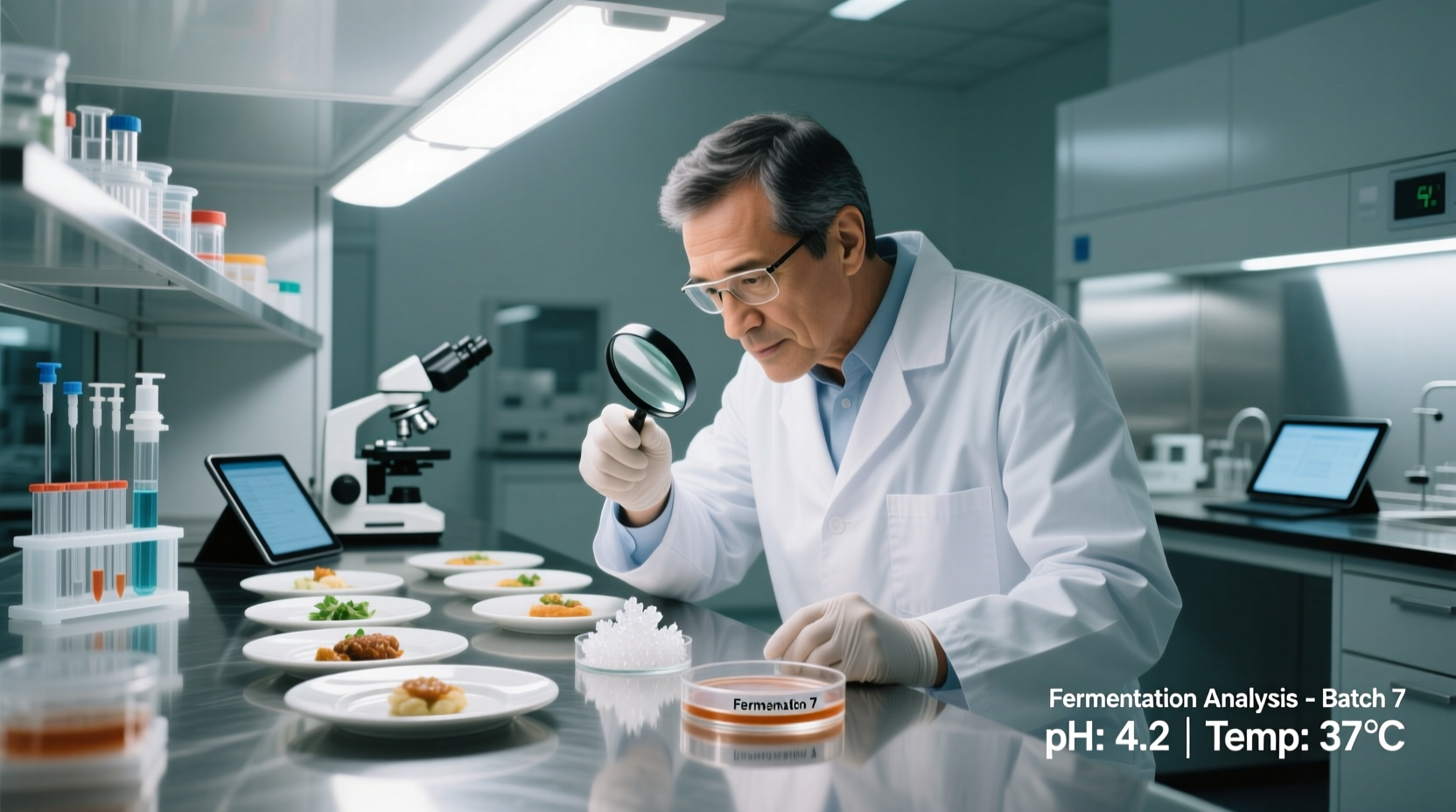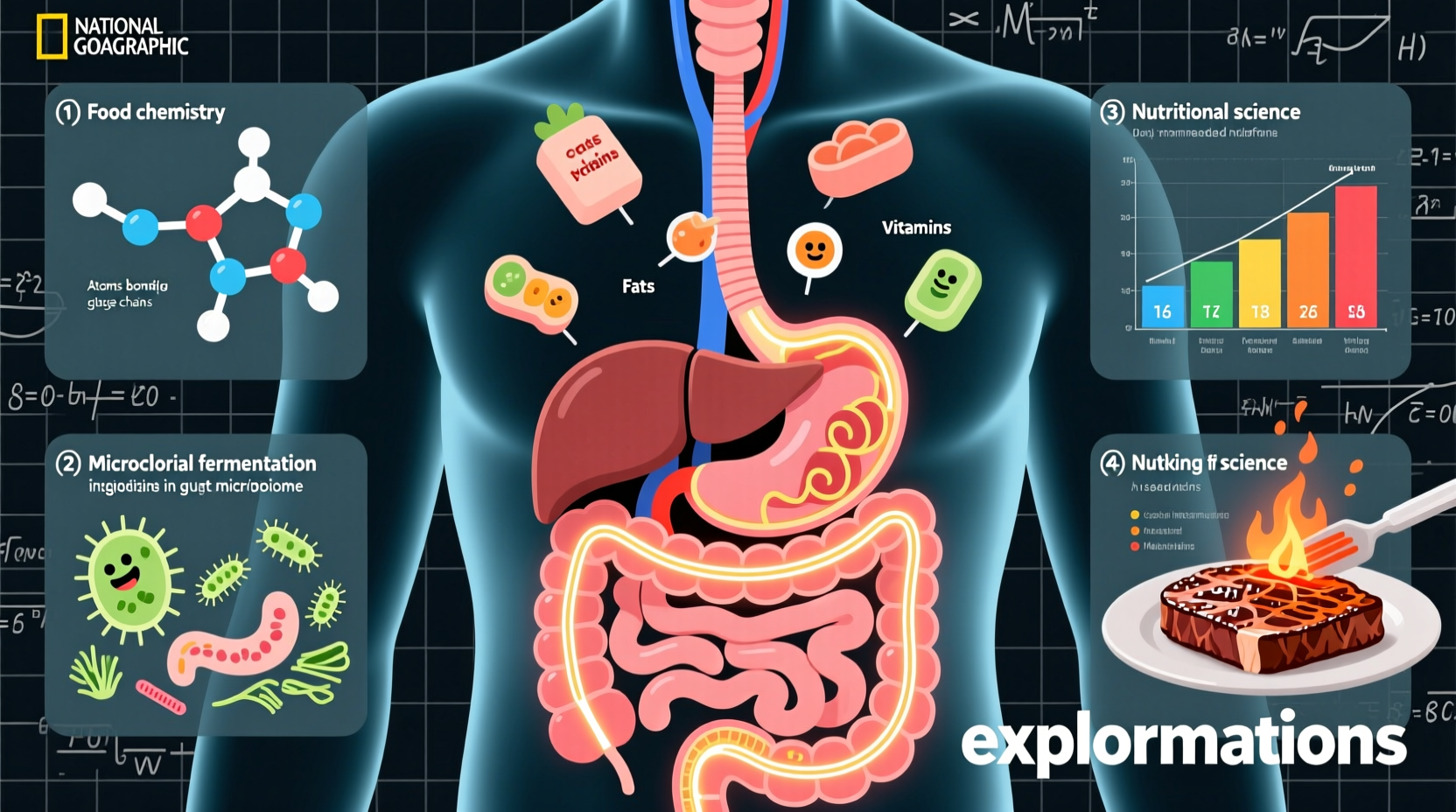Ever wonder why your bread rises perfectly or how scientists create shelf-stable milk? Understanding food science transforms how you interact with everyday ingredients and empowers you to make informed choices about what you eat. This comprehensive guide reveals how scientific principles shape our food system—from the kitchen counter to global supply chains.
Breaking Down Food Science: The Core Disciplines
Food science isn't just one subject—it's a convergence of specialized fields working together. Let's examine the five pillars that form this critical discipline:
| Discipline | Primary Focus | Real-World Application |
|---|---|---|
| Food Chemistry | Molecular composition and reactions | Developing non-browning apple varieties |
| Food Microbiology | Bacteria, molds, yeasts in food | Creating probiotic-rich fermented foods |
| Food Engineering | Processing equipment and methods | Designing energy-efficient pasteurization systems |
| Sensory Science | Human perception of food | Optimizing texture in plant-based meat alternatives |
| Food Safety | Hazard prevention and control | Implementing HACCP protocols in processing facilities |
How Food Science Impacts Your Daily Life
You interact with food science applications multiple times daily without realizing it. When you check expiration dates, notice consistent flavor in your favorite snacks, or use vacuum-sealed packaging, you're experiencing the results of rigorous scientific research. Modern food preservation techniques developed through food science have reduced global food waste by 14% since 2010, according to the Food and Agriculture Organization.
Consider the humble avocado toast—food scientists have developed modified atmosphere packaging that extends avocado freshness by 300%, created enzymatic treatments that prevent browning, and engineered precise ripening protocols that ensure consistent quality from farm to supermarket.

Historical Evolution: Key Milestones in Food Science
Food science as a formal discipline emerged from centuries of practical food preservation knowledge. Understanding its evolution helps contextualize modern practices:
- 1810: Nicolas Appert develops canning process after winning French government prize for food preservation
- 1856: Louis Pasteur establishes germ theory, revolutionizing food safety understanding
- 1928: First food technology degree program established at MIT
- 1958: U.S. passes Food Additives Amendment requiring scientific safety verification
- 1980s: HACCP (Hazard Analysis Critical Control Point) systems become industry standard
- 2020s: Precision fermentation creates animal-free dairy proteins
Practical Applications for Home Cooks
You don't need a laboratory to apply food science principles. Understanding basic concepts can dramatically improve your cooking results:
- Maillard reaction mastery: Achieve perfect sear by understanding the 140-165°C temperature range where browning occurs
- Emulsion science: Create stable vinaigrettes by understanding oil-water ratios and emulsifiers
- Starch gelatinization: Control sauce thickness by recognizing how different starches behave at various temperatures
- Acid balance: Enhance flavors by understanding pH's impact on taste perception
When experimenting with recipes, remember that food science operates within specific context boundaries. While understanding the science behind gluten development helps perfect bread-making, it won't compensate for poor ingredient quality or improper technique. The most successful applications integrate scientific knowledge with practical experience.
Career Pathways in Food Science
Food science offers diverse career opportunities beyond traditional laboratory settings. According to the Institute of Food Technologists, the field has grown by 11% annually over the past decade. Professionals work in:
- Research and development for food manufacturers
- Government regulatory agencies ensuring food safety
- Sustainability initiatives reducing food waste
- Startups developing alternative proteins
- Academic institutions advancing food knowledge
Most positions require at least a bachelor's degree in food science or related field, with advanced roles often requiring graduate education. The Bureau of Labor Statistics reports median annual wages of $78,390 for food scientists, with top earners exceeding $120,000.
Common Misconceptions About Food Science
Despite its importance, several myths persist about food science:
- "Food scientists create 'fake' food": Most work focuses on improving natural foods' safety, nutrition, and accessibility
- "All additives are harmful": Many serve critical safety functions, like preventing botulism in canned goods
- "Processed means unhealthy": Pasteurization and freezing are processing techniques that enhance safety and nutrition
- "Food science ignores traditional knowledge": Modern research often validates and builds upon centuries of culinary wisdom
Food science operates at the intersection of innovation and tradition, constantly evolving while respecting fundamental principles that have sustained human nutrition for millennia.











 浙公网安备
33010002000092号
浙公网安备
33010002000092号 浙B2-20120091-4
浙B2-20120091-4